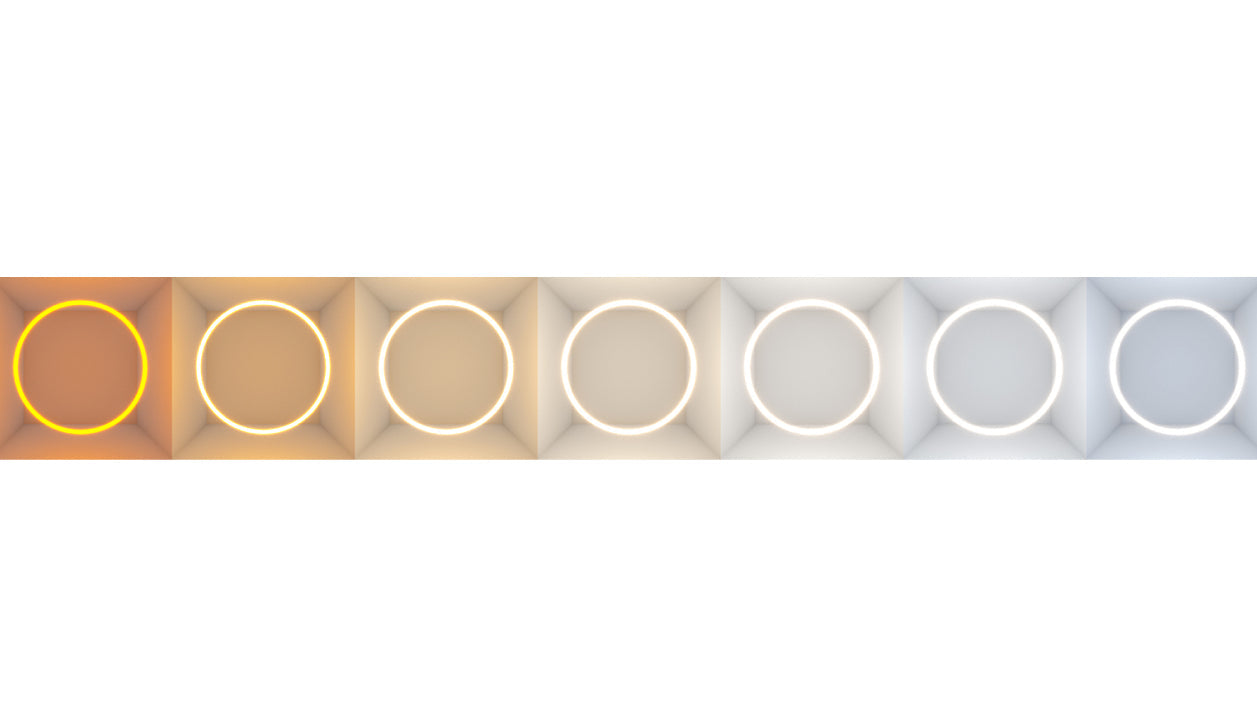Color Temperature, Lumens, and CRI are three distinct factors that collectively influence how we perceive and experience lighting. Color temperature sets the tone and mood, lumens determine the brightness, and CRI ensures accurate color representation. Understanding and balancing these factors allows you to create the desired lighting effects for various spaces and applications.
Here's a breakdown of the importance and differences between them:
CCT (Correlated Color Temperature)
- Definition: Color temperature measures the color appearance of light emitted by a light source. It's expressed in Kelvin (K) and ranges from warm (lower Kelvin values) to cool (higher Kelvin values) tones.
- Effect: Color temperature affects the mood and ambiance of a space. Warmer temperatures (around 2700K) create a cozy and intimate feel, while cooler temperatures (5000K and above) evoke a bright and energetic atmosphere.
- Application: Choosing the right color temperature is essential for matching the desired mood or functionality of a space. Warm tones are often used in living areas and bedrooms, while cooler tones are preferred in task-oriented spaces like offices and kitchens.

CRI (Color Rendering Index)
- Definition: CRI assesses how accurately a light source renders colors compared to natural daylight (the highest standard for light quality). It's rated on a scale from 0 to 100, with higher values indicating better color accuracy.
- Effect: CRI impacts how colors appear under a specific light source. Higher CRI values of 90 or higher are ideal and ensure that colors are represented as close to their true shades as possible while a CRI under 80 is deemed poor.
- Application: CRI is crucial in settings where color accuracy matters, such as art galleries, museums, retail stores, photography studios, and textile facilities. It ensures that products, artworks, or objects are perceived accurately.

Lumens
- Definition: Lumens measure the total calculated brightness, or output, of a light. It numerically expresses the brightness or intensity of the illumination.
- Effect: Lumens determine how well an area is illuminated. More lumens result in brighter lighting conditions, while fewer lumens produce a softer and more subdued ambiance.
- Application: Selecting the appropriate lumen output depends on the intended purpose of the lighting. For tasks requiring precision, higher lumens (300 lm/ft or more) are preferable, while for relaxed settings, lower lumens (200 lm/ft or less) may be ideal.
Together, these factors contribute to the overall ambiance, visual comfort, and functionality of a space, allowing us to tailor lighting solutions to suit various environments and purposes. Understanding the interplay of Color Temperature, Lumens, and CRI empowers us to create lighting environments that not only meet practical needs but also enhance the aesthetic and emotional aspects of our surroundings.

